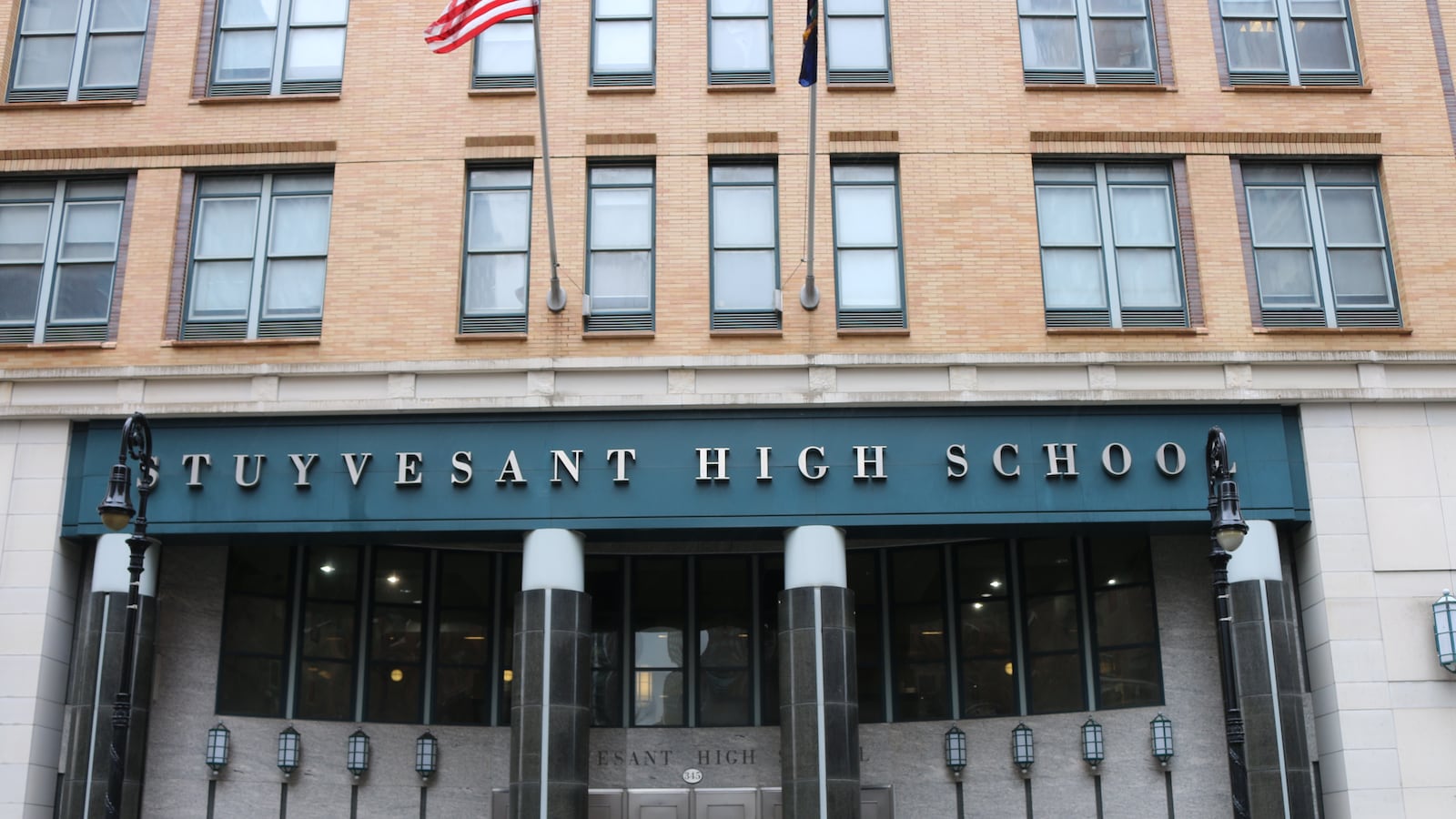After sustained pressure from advocates, Mayor Bill de Blasio is backing a two-step plan to reform admissions at eight of the city’s elite high schools and endorsing a specific replacement for the single-test admissions system.
The city’s specialized high schools — considered some of the crown jewels of New York City’s education system — accept students based on a single test score. Over the last decade, they have come under fire for offering admissions to few students of color: While two-thirds of city students are black or Hispanic, only about 10 percent of admissions offers to those schools go to black or Hispanic students.
De Blasio’s solution, laid out in an op-ed in Chalkbeat, would set aside 20 percent of the seats at the eight schools for students from low-income families starting next school year. Students who just missed the test score cut-off would be able to earn one of those set-aside seats through the longstanding “Discovery” program. Just 4 percent of seats were offered through that program in 2017.
The mayor also said he plans to push state lawmakers to change a law that requires admission at three of the schools to be decided by a single test score. That’s something de Blasio campaigned for during his run for mayor in 2014 but hasn’t made a priority since.
Most significantly, de Blasio says for the first time that he backs a system of replacing the admissions test with a system that picks students based on their middle school class rank and state test scores. The middle-school rank component is especially notable, as an NYU Steinhardt report found that the only way to really change the makeup of the elite high schools would be to guarantee admission to the top 10 percent of students at every middle school.
If all of these changes were implemented, de Blasio says that 45 percent of the student bodies at the eight high schools would be black or Latino.
Together, the proposals reflect the most specific plan yet to change a system that, year after year, becomes a symbol of New York City’s racially divided schools. But the changes de Blasio is proposing won’t come easily — and might not come at all.
The part of the plan that the city is promising to do on its own, expand the Discovery program, will only modestly improve diversity by the city’s own admission. And the plan’s more ambitious elements would require buy-in from state lawmakers who have repeatedly resisted de Blasio’s agenda and attempts to change admissions rules.
Meanwhile, the mayor’s plan does not include a move that many legal experts consider to be low-hanging fruit: changing the admissions rules at five of the eight schools without state approval.
While the city’s official position has long been that admissions at all eight schools are set by law, only three schools — Stuyvesant High School, Bronx High School of Science, and Brooklyn Technical High School — are specifically mentioned, leaving room for the city to reclassify the others. (De Blasio recently said he would ask lawyers about that change, but has not signaled he plans to act.)
The Discovery program has also proved problematic for de Blasio, in part because it is open to all low-income students — something that is not equivalent to black or Hispanic in New York City. The de Blasio administration has already tripled the program’s size since taking office, but its share of black and Latino students has also shrunk.
A lot of questions about the plan remain unanswered. It’s not clear whether the 20 percent of set-aside seats will be spread across the eight schools evenly, for one, or whether some schools like Stuyvesant will have fewer seats earmarked for Discovery. De Blasio doesn’t explain exactly how an admissions system reliant on middle-school grades and standardized test scores would work.
It’s also unclear how the mayor plans to push against opposition from alumni groups and parents who may worry that changing the admissions rules will lower academic standards, though his rhetoric was sharp in the op-ed.
“Anyone who tells you this is somehow going to lower the standard at these schools is buying into a false and damaging narrative,” de Blasio wrote. “It’s a narrative that traps students in a grossly unfair environment, asks them to live with the consequences, and actually blames them for it.”
So far, de Blasio’s incremental steps to boost diversity at specialized high schools have made little change to the overall student body — and therefore garnered little pushback.
It’s unclear whether the lackluster results caused him to switch strategies. More recently, de Blasio has also been under pressure to address school segregation in the city as a whole.
He may also have been pushed by his new schools chancellor, who has been outspoken on the subject since taking the helm of the school system about two months ago. Chancellor Richard Carranza has been talking about the issue since his very first media interview, and has repeatedly hinted that he is interested in changing their admissions process.
“From my perspective it’s not OK to have a public school in a city as diverse… and that you have only 10 African-American students in a high school,” Carranza said in April. “So I’m looking at that, absolutely.”

